购物车
全部删除  您的购物车当前为空
您的购物车当前为空
别名 UBB, Polyubiquitin-B
Anti-UBB Antibody (3A357) 是一种 Rabbit 抗体,靶向 UBB。Anti-UBB Antibody (3A357) 可用于 FCM,ICC/IF,IHC,WB。
Anti-UBB Antibody (3A357) 是一种 Rabbit 抗体,靶向 UBB。Anti-UBB Antibody (3A357) 可用于 FCM,ICC/IF,IHC,WB。
| 规格 | 价格 | 库存 | 数量 |
|---|---|---|---|
| 50 μL | ¥ 1,495 | 5日内发货 | |
| 100 μL | ¥ 2,480 | 5日内发货 |
| 产品描述 | Anti-UBB Antibody (3A357) is a Rabbit antibody targeting UBB. Anti-UBB Antibody (3A357) can be used in FCM,ICC/IF,IHC,WB. |
| 别名 | UBB, Polyubiquitin-B |
| Ig Type | IgG |
| 克隆号 | 3A357 |
| 交叉反应 | Human,Mouse,Rat |
| 验证活性 | 1. Western blot analysis of Ubiquitin on mouse heart lysates using anti-Ubiquitin antibody at 1/1,000 dilution. 2. Immunohistochemical analysis of paraffin-embedded mouse testis tissue using anti-Ubiquitin antibody. Counter stained with hematoxylin. 3. Immunohistochemical analysis of paraffin-embedded mouse brain tissue using anti-Ubiquitin antibody. Counter stained with hematoxylin. 4. Immunohistochemical analysis of paraffin-embedded mouse placenta tissue using anti-Ubiquitin antibody. Counter stained with hematoxylin. 5. ICC staining Ubiquitin in MCF-7 cells (green). The nuclear counter stain is DAPI (blue). Cells were fixed in paraformaldehyde, permeabilised with 0.25% Triton X100/PBS. 6. ICC staining Ubiquitin in SH-SY-5Y cells (green). The nuclear counter stain is DAPI (blue). Cells were fixed in paraformaldehyde, permeabilised with 0.25% Triton X100/PBS. 7. Flow cytometric analysis of HepG2 cells with Ubiquitin antibody at 1/50 dilution (blue) compared with an unlabelled control (cells without incubation with primary antibody; red). Alexa Fluor 488-conjugated goat anti rabbit IgG was used as the secondary antibody.  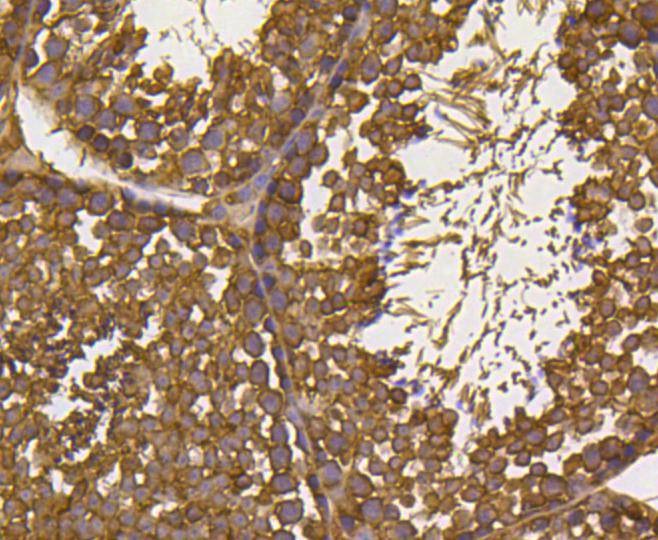 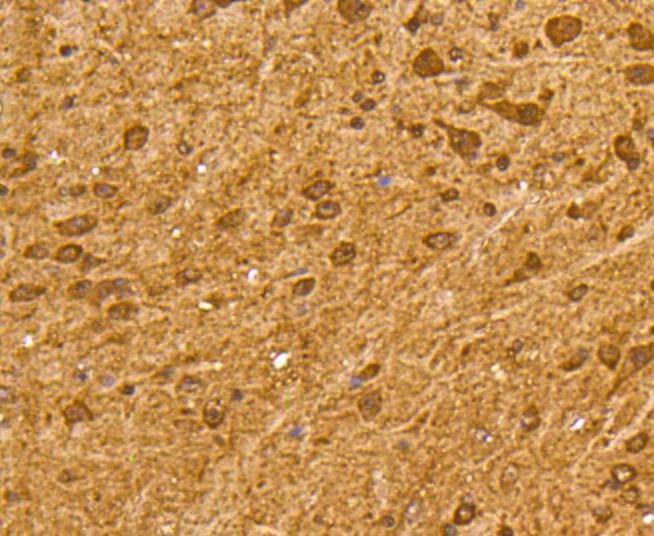 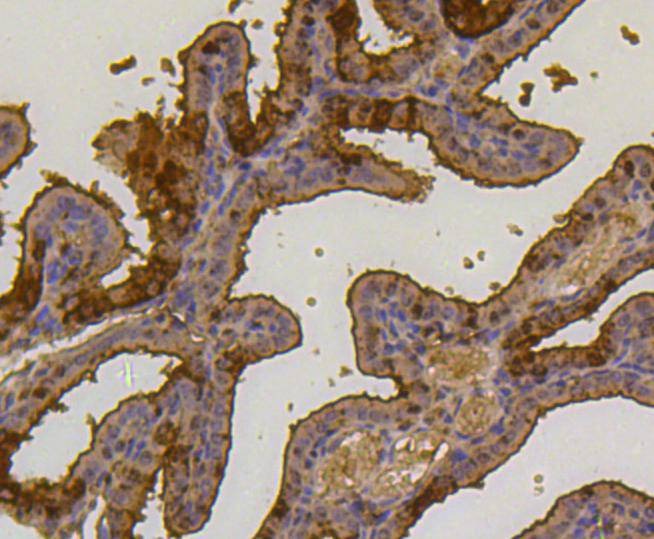 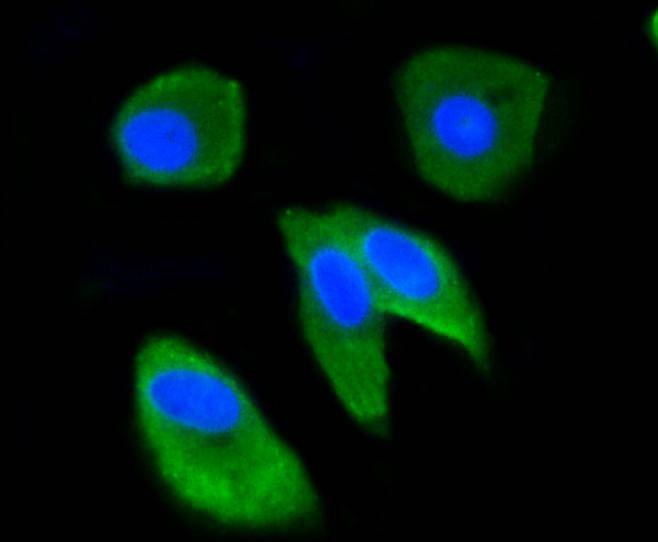 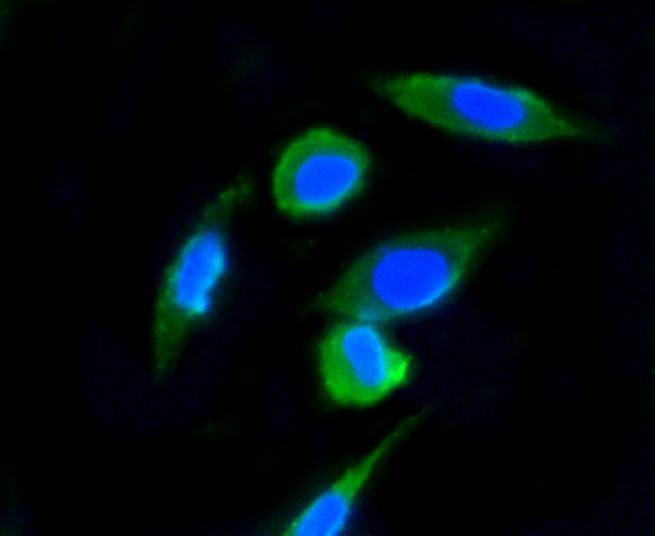 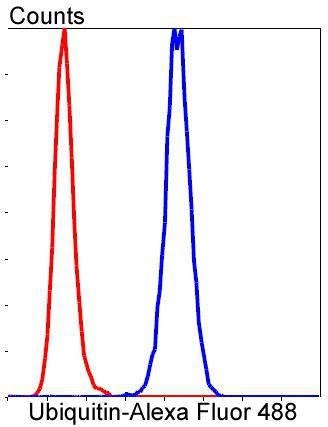 |
| 应用 | FCMICC/IFIHCWB |
| 推荐剂量 | WB: 1:1000-2000; IHC: 1:200-500; ICC/IF: 1:50-200; FCM: 1:50-100 |
| 抗体种类 | Monoclonal |
| 宿主来源 | Rabbit |
| 构建方式 | Recombinant Antibody |
| 纯化方式 | ProA affinity purified |
| 性状 | Liquid |
| 缓冲液 | 1*TBS (pH7.4), 1%BSA, 40%Glycerol. Preservative: 0.05% Sodium Azide. |
| 研究背景 | Ubiquitin is a conserved polypeptide unit that plays an important role in the ubiquitin-proteasome pathway. Ubiquitin exists either covalently attached to another protein, or free (unanchored). When covalently bound, it is conjugated to target proteins via an isopeptide bond either as a monomer (monoubiquitin), a polymer linked via different Lys residues of the ubiquitin (polyubiquitin chains) or a linear polymer linked via the initiator Met of the ubiquitin (linear polyubiquitin chains). Polyubiquitin chains, when attached to a target protein, have different functions depending on the Lys residue of the ubiquitin that is linked: Lys-6-linked may be involved in DNA repair; Lys-11-linked is involved in ERAD (endoplasmic reticulum-associated degradation) and in cell-cycle regulation; Lys-29-linked is involved in lysosomal degradation; Lys-33-linked is involved in kinase modification; Lys-48-linked is involved in protein degradation via the proteasome; Lys-63-linked is involved in endocytosis, DNA-damage responses as well as in signaling processes leading to activation of the transcription factor NF-kappa-B. This antibody reacts with ubiquitin, a polypeptide w/ Mr. of approx. 8.5kD. It reacts with physiologically occurring conjugates of ubiquitin and intracellular proteins. Specifically recognizes ubiquitinated cytoplasmic inclusion bodies. |
| 偶联 | Unconjugated |
| 免疫原 | Recombinant Protein |
| Uniprot ID |
| 分子量 | Theoretical: 55 kDa. |
| 储存方式 | Store at -20°C or -80°C for 12 months. Avoid repeated freeze-thaw cycles. |
| 运输方式 | Shipping with blue ice. |
评论内容